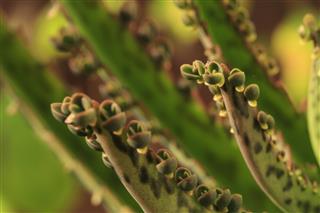
Asexual reproduction is a process in which gametes do not fuse together. This BiologyWise article is an attempt to understand asexual reproduction in plants, and how it differentiates from sexual reproduction in plants.
For plants to survive, they need to reproduce. And they do; sexually as well as asexually. One of the reasons that asexual reproduction in plants is so studied upon is the capability of plants to reproduce at a faster stage, using cells from any plant part. One of perfect examples of asexual reproduction is tissue culture, however, this is laboratory-controlled. But there are many more ways that plants are naturally capable of reproducing asexually. But before I get down to explaining what is the definition of this process, let us understand the difference between both these types of reproduction processes in plants.
Sexual Reproduction in Plants
Sexual reproduction involves creation of a new individual produced by combining the features or genes from two parents. This type of reproduction in plants occurs through the medium of flowers. The flower structure is made up of pollen-producing male organ known as stamen, and female part called pistil that contains the ovary and eggs. Pollination is the process that starts the sexual mechanism for procreation. The petals play a vital role in attracting insects to the flowers that carry pollen from one plant to another. Wind pollination occurs where flowers do not have petals. Pollination results in production of seeds, and almost all plants are procreated through this mechanism.
Asexual Reproduction in Plants
How do plants reproduce asexually? Plants are made up of cells and tissues that carry within them the ability to regenerate the entire plant structure known as totipotency, which ensures offspring that is completely identical to the parent. This means any part of the plant; leaves, stems, buds, or roots are capable of reproducing a new individual plant under suitable conditions. This method of reproducing is known as asexual reproduction. Following are a few examples of asexual reproduction.
Stems
Above ground or underground stems is the most common example of asexual reproduction in plants. Stolons or runners are horizontal stems. They shoot from a leaf node, and instead of developing into leaves, develop into stems with very few leaves. These stems produce roots that go down into the soil, while shooting new leaves above the ground. Strawberry, spider plant, etc. are examples of asexual reproduction through stolons. Rhizomes, bulbs, corms, and tubers are used as stored food and are borne underground as a part of the root system.
Leaves
Deeply veined leaves or succulent leaves like that of a cacti are all capable of producing plantlets from the leaves. The plantlets are produced on the leaf margins that fall to the ground, take root, and mature into individual plants. Kalanchoe and the aquatic plant duckweed reproduce in this manner. The amazing thing about this method is that the leaf that reproduces may not always be attached to the plant. A fallen leaf is also capable of producing leaflets as long as the cells and tissues are alive.
Other Methods
There are many methods employed to clone plants to ensure that they are a replica of the parent plant. Natural as well as laboratory methods are used.
Roots
Many plants and trees send out shoots or suckers directly from the roots. These can easily get developed into new plants.
Cuttings
Soft or hard wood cuttings are developed into individual plants by growing them through the medium of soil or water.
Grafting
Grafting new plants using buds or nodes is also a common example of asexual reproduction of plants.
Asexual reproduction is extensively used by plant nurseries and horticulturist quite frequently to propagate plants in large volumes to ensure their survival.



